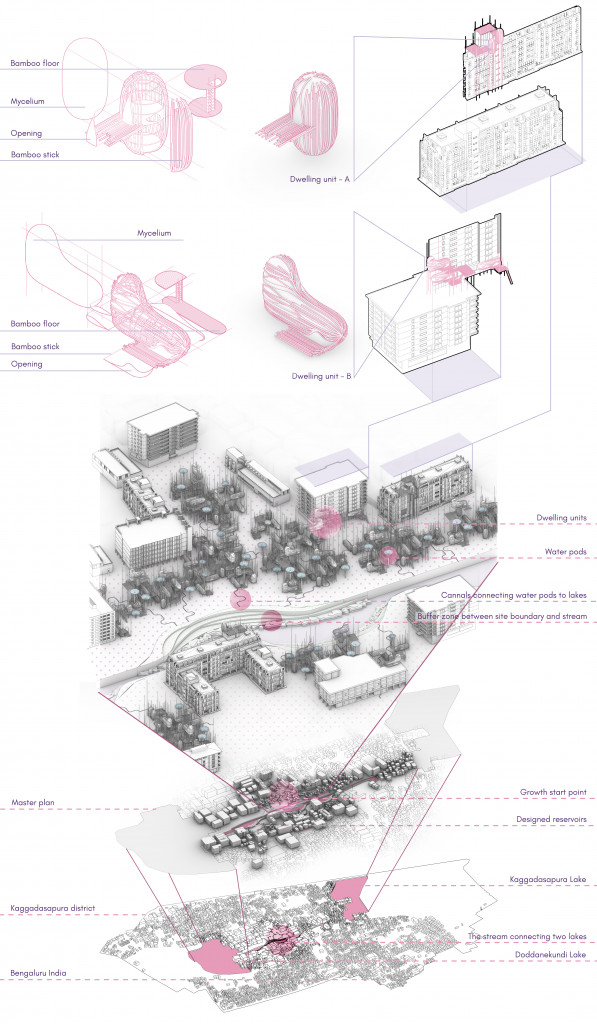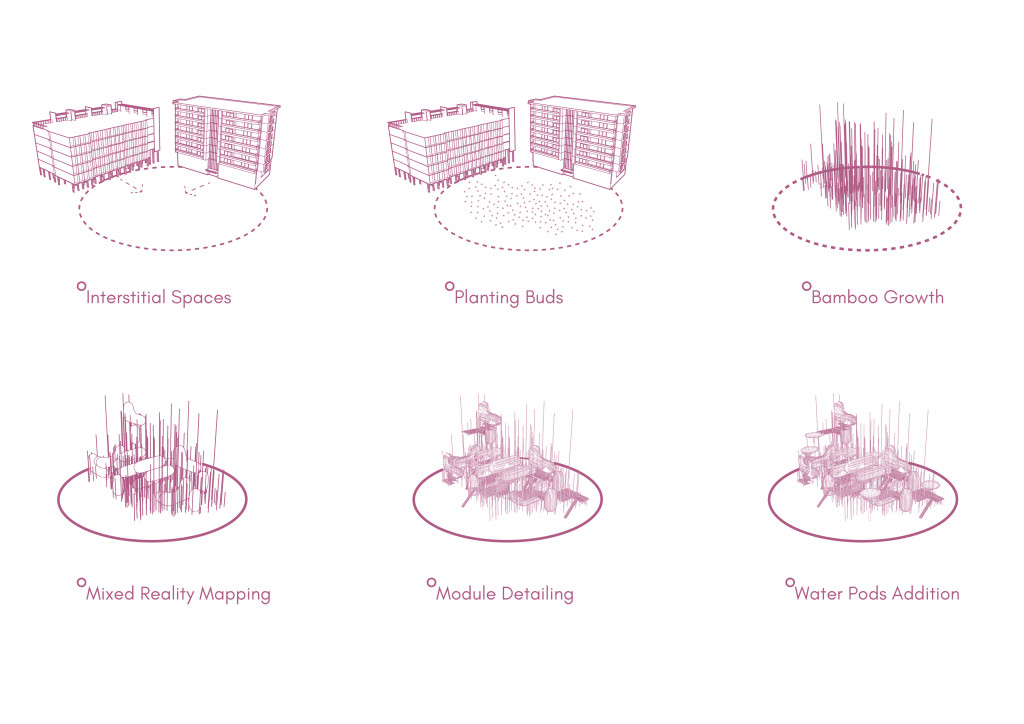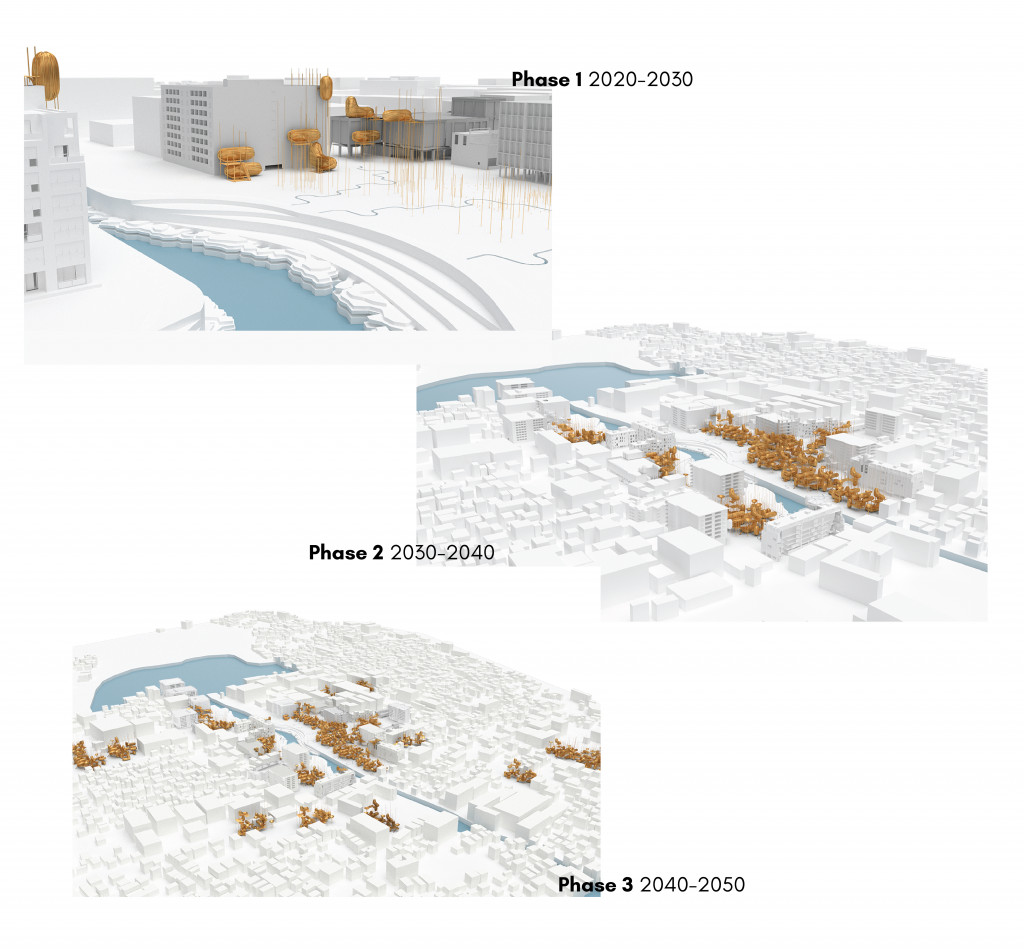Urban Oasis
A use case for water based future housing strategies in Bengaluru

Bengaluru is facing complex issues like urbanization, depleting natural resources, economic wealth gap and climate change. At the same time, we are in the middle of a global housing crisis. We simply aren’t building enough affordable homes to keep up with the demand. It has also become increasingly unaffordable, unsustainable and socially unequal. And the situation is only become more challenging: 1.5 million people are moving to a city every year—meaning that in just a little over a decade, millions other are projected to lack access to affordable, adequate and secure housing.
Urban Oasis thus is an exploration into the use case for future housing strategies in Bengaluru. It is a research into the interstices of the city fabric which have been left behind due to undue regulation in our cities, retrieving them back from the oblivion and enabling to possible interventions in which depends the future of our cities. The idea is to also to understand the precarity of domestic space in the current scenario and explore alternative models on ways of co-ownership by co-producing and co caring, presenting a protopian vision of the future.

Water Dependency and Formulating the Problematic
Bangalore was built around a series of lakes that acted as rainwater reservoirs and recharged the aquifers, providing a renewable source of water. But the lakes have been under attack by urbanisation, encroached by real estate projects and left foaming and frothing as toxic effluents, sewage and trash produced by industries and homes fill them.
Predictably, Bengaluru, which has often been in the news for water-related crises—be it violent protests over the sharing of Cauvery water with neighbouring Tamil Nadu or the burning Bellandur Lake—was in focus. Will Bengaluru be the next Indian city to hit Day Zero? After all, a little over a year ago, the government policy think tank NITI Aayog had listed it as one of the 21 major Indian cities which would run out of groundwater by 2020, and the BBC had run a story naming it as one of 11 cities in the world that would soon hit Day Zero, like Cape Town in South Africa and Sao Paulo in Brazil.
– Livemint
 // Kaggadaspura Lake_Site
// Kaggadaspura Lake_Site
The site is alongside a narrow stream between two dried up lakes Kaggadaspura and Doddanekundi in the city of Bengaluru. The location provides huge potential to explore the new water based economy proposals for our cities of the future.
Concept
// Rendensification_Understanding the complexity of the existing city and proposing a solution that works with the existing infrastructure, adding value to the interstices of the city fabric
// Ephemeral Lifestyle_The boundaries in the future will be even smaller than today enabled by technology, the residents shall live in shared communities and will be able to move from one place to another without having a large ecological footprint
// Buildings as Organisms_The Buildings of the future should be looked as organisms rather than static entities, they will be able to communicate, transform, share resources amongst each other


 // Concept_The Lifestyle of the Future
// Concept_The Lifestyle of the Future
 // Site_Detailed
// Site_Detailed
 //Possible Interstices
//Possible Interstices
Bamboo and Mycellium: Materials of the Future

The research focuses on two key sustainable materials of the future Bamboo and Mycellium. There is an immense potential here as being nature based they can have negligible carbon footprint in our cities. Bamboo has two times the compressive strength as to that of concrete also being able to regulate indoor temperatures and block UV Rays. Mycellium on the other hand can be produced by mixing with the food waste and hence can be grown with the kitchen waste at homes, and has the ability to grow by itself – a property yet to be explored by the construction industry of today.

//Bamboo Pods

//Bamboo Pods_Clusterification

// Axonometric Drawing

// Growth of Living System

// Living System

 // Sustainability Goals
// Sustainability Goals
 // Construction Details
// Construction Details
 // Site Plan_Graphical Scale
// Site Plan_Graphical Scale
 // Site Layered_Proposal
// Site Layered_Proposal
 // Representative Section_Self Sufficiency
// Representative Section_Self Sufficiency
 // Phased growth of the Living System
// Phased growth of the Living System

The House of the Future / Urban Oasis is a project of IAAC, Institute for Advanced Architecture of Catalonia developed at Master in Advanced Architecture in 2019/2020 by:
Students: Abhishek Sharma, Nareh Khaloain, Akshay Mhamunkar, Matin Darabi
Faculty: Carmelo Zapulla | Assistant Faculty: Sebastian Amorelli